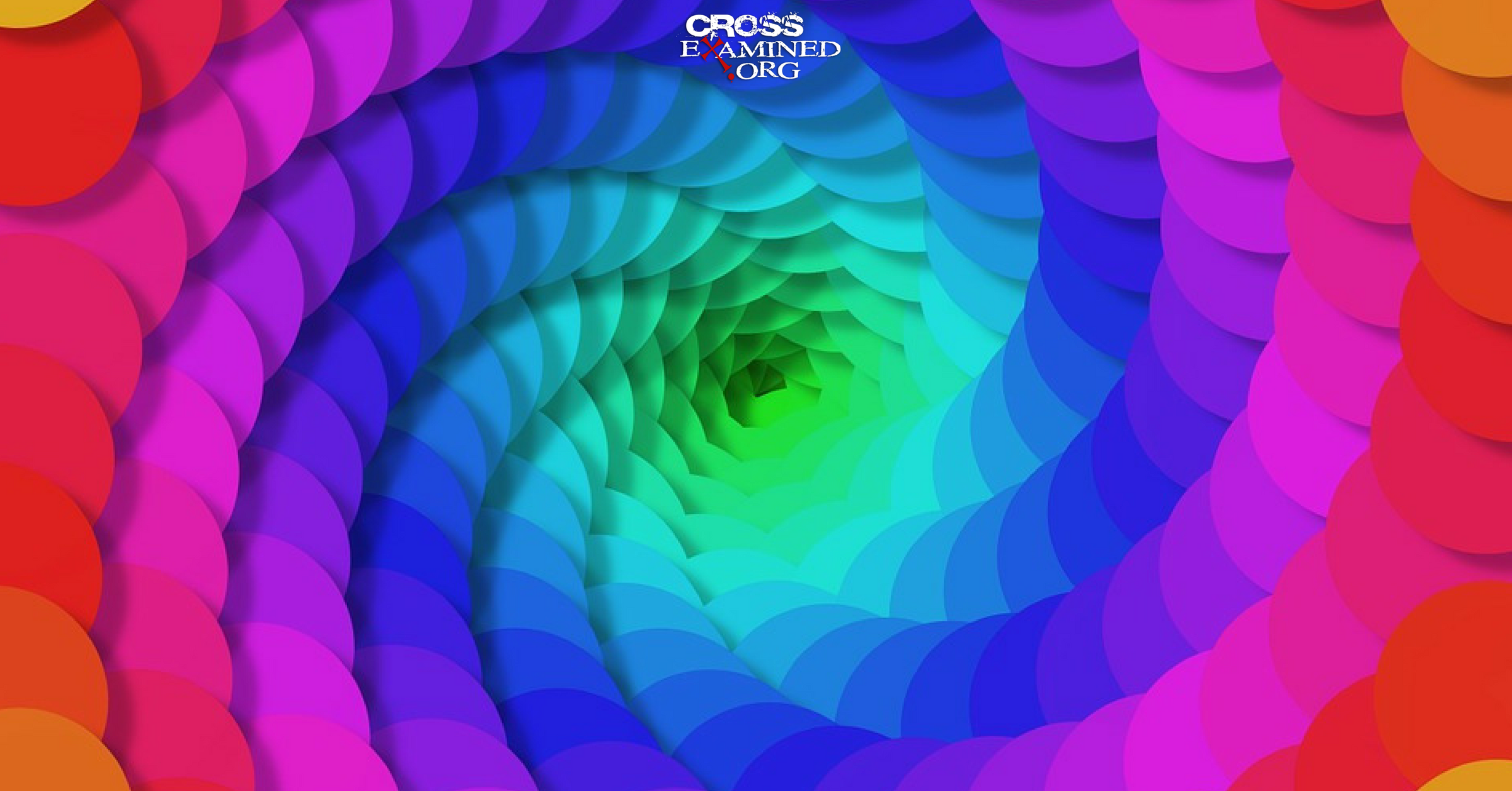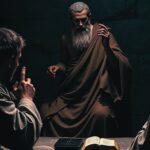Understanding portions of Scripture, particularly prophecy and apocalyptic literature, requires the reader to understand the symbolic meaning of the devices used by the prophet or apostle. Last week, I posted a reference guide describing the symbolic meaning of various numbers. In Revelation, John describes Jesus’s appearance as having hair as “white as wool—white as snow—and his eyes like a fiery flame. His feet were like fine bronze as it is fired in a furnace, and his voice like the sound of cascading waters” (Rev. 1:14-15).[1] Did John mean that Jesus literally had ultra-white hair, had fireballs for eyes, and metallic legs? If so, then John presented Jesus in such a way that would remind us of James Cameron’s Terminator. While Jesus did tell the disciples, “I’ll be back” (using my best Arnold Schwarzenegger voice), John used symbolism to describe the presence of Jesus. How do we understand the biblical use of colors? Let’s take a look. Afterwards, we’ll come back to John’s description of Jesus to show how this information is helpful in interpreting prophecy and apocalyptic literature (e.g., Daniel, Revelation).
Primary Colors
Red: Red is the color of blood. In the New Testament, Jesus’s sacrifice, often employing the imagery of blood (e.g., John 6:55). In the Old Testament, oudem is translated “red clay.” Oudem is the root word indicating mankind. Thus, red represents humanity. But, on a larger scale, red represents the love of God represented in and through the sacrifice of Jesus Christ. *Red is an official church color representing the Church itself. Red cloths are used during special festivals celebrating saints, Holy Week, and Pentecost.
Yellow/Gold: Yellow is represented by two Hebrew words: charuts, referring to gold alloyed with silver or of sick skin (Ps. 68:13); and tsahob, referring to the color of hair or a patch of skin indicating leprosy (Lev. 13:30). Gold was a precious metal valued for its beauty and workability.[2] The temple was arrayed in gold, so it is no surprise that the New Jerusalem is described as being made of gold (Rev. 21:18, 21). Yellow and gold are also the color of fire. Fire represents the presence of God (Dt. 4:24; Heb. 12:29) and God’s refining process. Therefore, yellow represents the joy, the presence of God, and God’s anointing, whereas gold represents God’s holiness, divine nature, and his majesty. *Gold/yellow cloth is sometimes used in the place of white to celebrate the holiest days of the year (i.e., Easter and Christmas).
Blue: Blue is obviously the color of the sky, so the color holds some connection with the heavens. The Hebrew term for “blue” is tekelet which is sometimes translated as “purple” (Eze. 23:6) or “violet” (Jer. 10:9). Blue dyes were inferior to royal purple, but still a very popular dye and quite expensive. Blue was used on the clothing of the priests and aligned the hem of the priests’ garments (Ex. 28:5-6, 8, 15).[3] Blue was used in the tabernacle (Ex. 25:4; 26:1, 4) and in the temple (2 Chr. 2:7, 14). Blue indicates heaven, the Holy Spirit, and truth. Lighter shades of blue are sometimes used to represent the Virgin Mary. *Blue cloths are often used to represent the season of Advent, although purple is the official color.
White: White is used often to depict purity, holiness, and the redemption of sin. For the forgiven, sin is said to be washed as white as snow (Ps. 51:7; Isa. 1:18). White also represents the absolute purity of God (Dan. 7:9), of Christ (Rev. 2:17), of God’s judgment (Rev. 20:11), as well as God complete victory over the powers of evil (Zech. 6:3, 6; Rev. 6:2; 19:11). *White is an official color of the church. White clothes are used for holy days on and surrounding the Easter season, Christmas season, and other special occasions.
Black: Black symbolizes evil, gloom, judgment, and death (Lam. 4:8; Mic. 3:6; Zech. 6:2, 6; Rev. 6:5, 12). Hell is described as a place of “the blackest of darkness” (Jude 13; 2 Pet. 2:17).
Green: The color green is usually associated with vegetation. As such, green represents life. Cedars were popular especially in Lebanon and were valued as building material.[4] Cedars played some role in the purification rites of Israel (Lev. 14:4; Num. 19:6). Cedars represented power and wealth (1 Kgs. 10:27), growth and strength (Ps. 92:12; Eze. 17). Green is associated with the evergreen that does not lose its foliage. Thus, green represents life, eternal life, restoration, and a new beginning. *Green is an official color of the church, used during times where there is no official time of celebration. The church calls this period ordinary time.

Cedar of Lebanon
Purple: Purple dyes were the most expensive and most highly treasured in ancient times. The Phoenicians developed purple dye which came from several predatory snails living in the Mediterranean Sea (i.e., murex brandaris, murex trunculus, and purpura haemostoma).[5] Purple became an official color of the tabernacle and of Aaron’s priestly garments (Ex. 26:1; 28:15-33). As such, purple represents royalty, priesthood, and wealth. *Purple is an official color of the church and used to symbolize the Advent (sometimes replaced with blue) and Lent seasons.
Bronze: Bronze is a hard metallic alloy composed of copper and arsenic, antimony, lead, and silver alloys. Bronze is extremely hard and durable. Bronze was often used for objects in the temple and tabernacle (1 Chr. 15:19). Jesus is described as having feet as bronze (Rev. 1:14-15). Bronze represents strength and durability.
Other Colors
Silver: Used to describe the word of God, divinity, purity, salvation, and truth (e.g., Jer. 6:30).
Amber: Like yellow, amber is a color of fire which represents God’s glory, judgment, and endurance.
Orange: Like amber and yellow, orange is a color of fire which represents the power and presence of God.
Pink/Fuchsia: Indicates a person’s right relationship with God. Pink is sometimes used by the church for the third Sunday of Advent and the third Sunday of Lent.
Scarlet: Sometimes indicates sin. But, scarlet can indicate royalty.
Sapphire: Indicates the law, commandments, grace, revelation, and the Holy Spirit.
Turquoise: Indicates the river of God, sanctification, the New Jerusalem, and God’s healing.
So, using the tools we have in this reference guide, we can denote that in Revelation 1, Jesus’s white hair represents his purity and holiness. His eyes of flaming fires symbolize his divine judgment. Finally, Jesus’s feet of bronze represent his great strength. An understanding of the symbolic meaning of colors can greatly help one interpret the imagery used in prophecy.
Notes
[1] Unless otherwise noted, all quoted Scripture comes from the Christian Standard Bible (Nashville: Holman, 2017).
[2] Daniel C. Browning Jr., “Minerals and Metals,” ed. Chad Brand et al., Holman Illustrated Bible Dictionary (Nashville, TN: Holman Bible Publishers, 2003), 1131.
[3] The hem of Jesus’s garment could have been blue. Thus, when the woman touched the hem of Jesus’s garment, it could have been blue if Jesus was able to afford a strip of blue cloth.
[4] Chad Brand et al., eds., “Cedar,” Holman Illustrated Bible Dictionary (Nashville, TN: Holman Bible Publishers, 2003), 274.
[5] Mary Petrina Boyd, “Purple,” ed. David Noel Freedman, Allen C. Myers, and Astrid B. Beck,Eerdmans Dictionary of the Bible (Grand Rapids, MI: W.B. Eerdmans, 2000), 1100.
Brian G. Chilton is the founder of BellatorChristi.com and is the host of The Bellator Christi Podcast. He received his Master of Divinity in Theology from Liberty University (with high distinction); his Bachelor of Science in Religious Studies and Philosophy from Gardner-Webb University (with honors); and received certification in Christian Apologetics from Biola University. Brian is currently a student of the Ph.D. program in Theology and Apologetics at Liberty University. Brian is full member of the International Society of Christian Apologetics and the Christian Apologetics Alliance. Brian has been in the ministry for over 14 years and serves as the pastor of Huntsville Baptist Church in Yadkinville, North Carolina.
Original Blog Source: http://bit.ly/2nrZbSg



















Facebook Comments